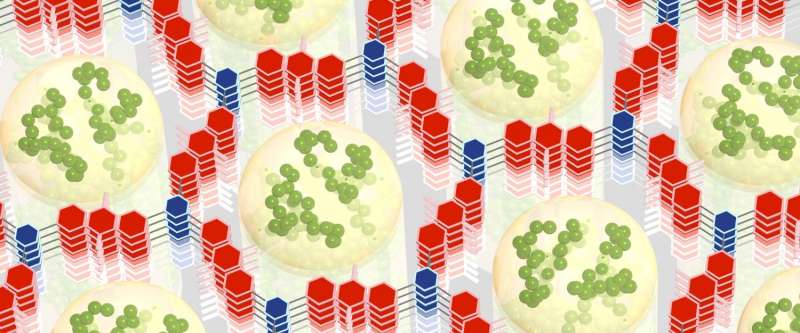New electrical energy storage material shows its power

A powerful new material developed by Northwestern University chemist William Dichtel and his research team could one day speed up the charging process of electric cars and help increase their driving range.
An electric car currently relies on a complex interplay of both batteries and supercapacitors to provide the energy it needs to go places, but that could change.
"Our material combines the best of both worlds—the ability to store large amounts of electrical energy or charge, like a battery, and the ability to charge and discharge rapidly, like a supercapacitor," said Dichtel, a pioneer in the young research field of covalent organic frameworks (COFs).
Dichtel and his research team have combined a COF—a strong, stiff polymer with an abundance of tiny pores suitable for storing energy—with a very conductive material to create the first modified redox-active COF that closes the gap with other older porous carbon-based electrodes.
"COFs are beautiful structures with a lot of promise, but their conductivity is limited," Dichtel said. "That's the problem we are addressing here. By modifying them—by adding the attribute they lack—we can start to use COFs in a practical way."
And modified COFs are commercially attractive: COFs are made of inexpensive, readily available materials, while carbon-based materials are expensive to process and mass-produce.
Dichtel, the Robert L. Letsinger Professor of Chemistry at the Weinberg College of Arts and Sciences, is presenting his team's findings today (Aug. 24) at the American Chemical Society (ACS) National Meeting in Philadelphia. Also today, a paper by Dichtel and co-authors from Northwestern and Cornell University was published by the journal ACS Central Science.
To demonstrate the new material's capabilities, the researchers built a coin-cell battery prototype device capable of powering a light-emitting diode for 30 seconds.
The material has outstanding stability, capable of 10,000 charge/discharge cycles, the researchers report. They also performed extensive additional experiments to understand how the COF and the conducting polymer, called poly(3,4-ethylenedioxythiophene) or PEDOT, work together to store electrical energy.
Dichtel and his team made the material on an electrode surface. Two organic molecules self-assembled and condensed into a honeycomb-like grid, one 2-D layer stacked on top of the other. Into the grid's holes, or pores, the researchers deposited the conducting polymer.
Each pore is only 2.3 nanometers wide, but the COF is full of these useful pores, creating a lot of surface area in a very small space. A small amount of the fluffy COF powder, just enough to fill a shot glass and weighing the same as a dollar bill, has the surface area of an Olympic swimming pool.
The modified COF showed a dramatic improvement in its ability to both store energy and to rapidly charge and discharge the device. The material can store roughly 10 times more electrical energy than the unmodified COF, and it can get the electrical charge in and out of the device 10 to 15 times faster.
"It was pretty amazing to see this performance gain," Dichtel said. "This research will guide us as we investigate other modified COFs and work to find the best materials for creating new electrical energy storage devices."
More information: Catherine R. Mulzer et al, Superior Charge Storage and Power Density of a Conducting Polymer-Modified Covalent Organic Framework, ACS Central Science (2016). DOI: 10.1021/acscentsci.6b00220
Journal information: ACS Central Science
Provided by Northwestern University




















